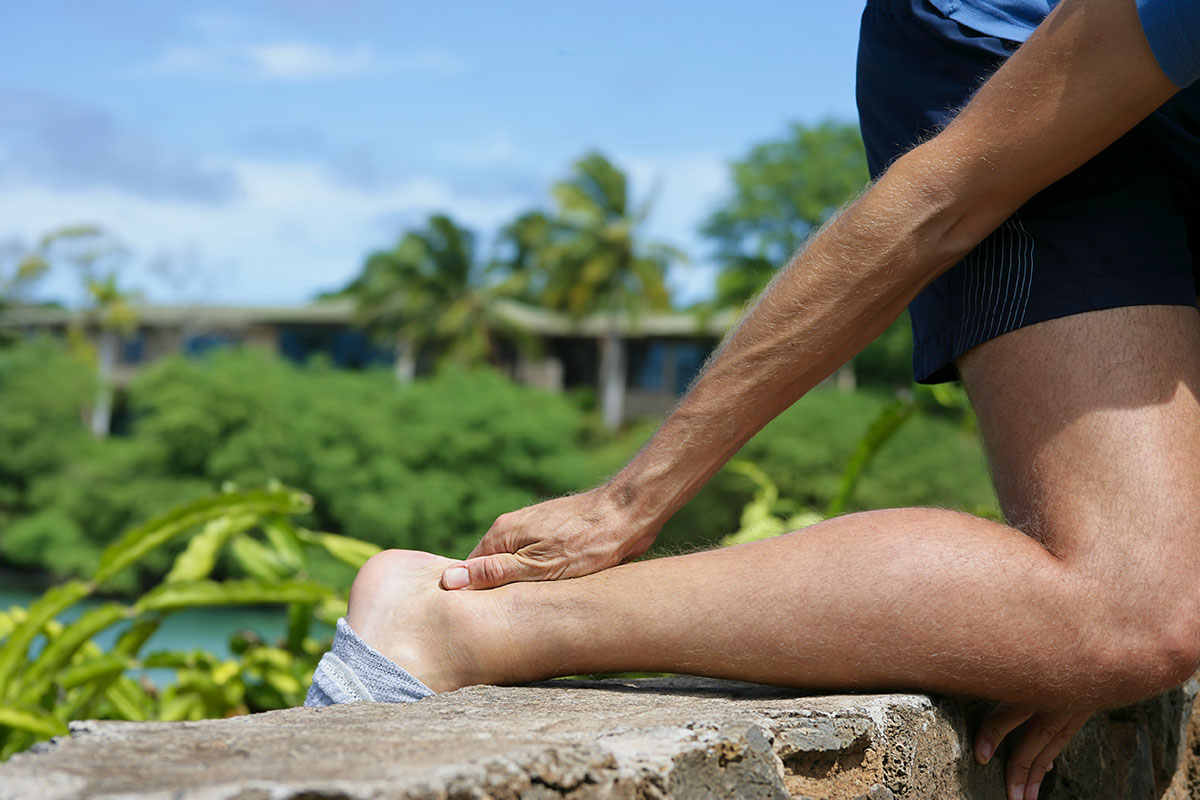

The Achilles tendon is the tissue that connects your calf muscles to your heel bone. It is the largest and strongest tendon in the human body, assisting in walking, stair climbing, standing on tip toes, jumping, and running. While meant to hold up to great stress, the Achilles tendon is prone to irritation from overuse.

Achilles tendon conditions are one of the most common overuse injuries. It is a recognized problem in both athletic and sedentary populations alike. Achilles tendinitis (also spelled “tendonitis”) is an acute overuse injury of the tendon, where it becomes irritated and inflamed. If the tendon has chronic microscopic damage over several months, this is called Achilles tendinopathy. Achilles tendinopathy is accompanied by changes in the tendon’s structure, altered leg function, and fear of movement. Collectively, these impairments can limit participation and performance in sports and regular activities of daily living. Key risk factors for Achilles tendinopathy include aging and obesity. If sports-related, it is particularly rampant with those involved in running and jumping. Achilles tendon rupture is often a sudden injury, where the tendon partially or completely separates from the heel bone. This article will focus on tendinitis/tendinopathy.
Common symptoms of Achilles tendon injuries include intermittent pain related to activity or exercise, and stiffness upon weightbearing after prolonged quiet postures (i.e. standing, sitting, sleeping). There can be pain and stiffness at the start of exercise that decreases progressively during the exercise. The tendon is often tender to touch, swollen, and can be enlarged.
Achilles tendon injuries can vary depending on the site of injury and types of problems that occur. Non-insertional tendinopathy occurs higher above the heel and is more common than insertional Achilles tendinopathy, which occurs at the heel. Orthopedists specializing in foot and ankle issues or physical therapists will use palpation and special clinical tests to help diagnose. They will consider other common conditions such as plantar fasciitis, ankle impingement, nerve compression, bone spurs, or systemic inflammatory disease. Diagnostic imaging such as ultrasound or MRI may be utilized.
A general treatment guideline for tendon injuries includes education, unloading, reloading, protecting the Achilles tendon, and returning to sports. Education focuses on external factors and activity modifications, such as overtraining in sports and work task adaptations. This may require pausing sports or work to achieve longer lasting benefits. Unloading the Achilles tendon will be multi-factorial, including ankle joint stretches, orthotic devices (orthotics, heel lifts), and perhaps short periods of crutches or boot use. The optimal method for treating Achilles tendinopathy is to progressively re-load the tendon. Eccentric exercises are well known to be effective – and isometrics, isotonics, heavy loading, and plyometric loading can all be incorporated for a comprehensive program. These are meant to stimulate tendon remodeling and restore strength. The highest level of evidence for treating Achilles tendon injuries is exercise rehabilitation. There is moderate evidence supporting low-level laser and iontophoresis (modalities used for inflammatory conditions). Some evidence supports manual therapy and taping strategies. Non-insertional Achilles tendon injuries have a positive long-term outlook. In some cases, surgeries and other procedures (i.e. injections) may be attempted if symptoms persist. Those with insertional Achilles tendinopathy tend to have a longer recovery road than those with non-insertional Achilles tendinopathy. Movement retraining to improve body mechanics and sports-specific training help protect from future recurrence. Both symptomatic recovery and recovery of function are necessary to allow an athlete to successfully resume full sport participation.
Symptomatic individuals and athletes often continue with their activities, despite their performance being affected. This injury will worsen if ignored. Complete recovery can be slow; it can take a year or more, and reinjury is common. It is important to recognize and treat the initial symptoms of stiffness and soreness early. This will reduce injury severity, impact on sport performance, and recovery time. Physical therapy is ideal for Achilles tendon injuries to provide skilled guidance on pain reduction, exercise programs, and load management.
Always prioritize safety, adhere to guidelines, and never hesitate to seek medical assistance if you sustain an injury. Keep your spine, joints, and muscles safe throughout the summer season! Visit CFAOrtho.com for all of your musculoskeletal needs.